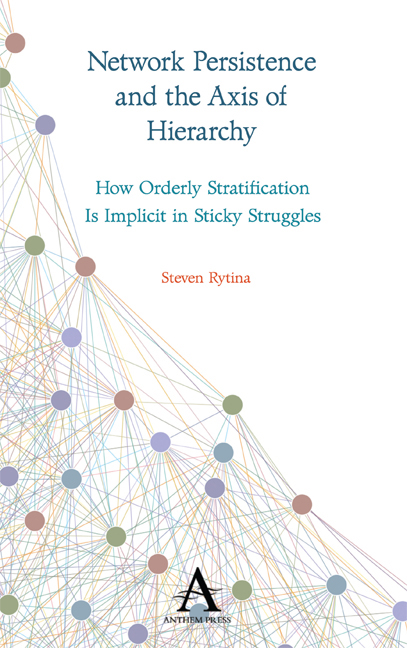 Network Persistence and the Axis of Hierarchy
Network Persistence and the Axis of Hierarchy Book contents
- Frontmatter
- Contents
- List of Illustrations
- Preface
- Chapter One Sticky Struggles: The Unified Pattern of Social Ranks Inherent in Networks
- Chapter Two Foundations of Cacophony
- Chapter Three Knots of Regularity
- Chapter Four Hierarchy: Inevitable but Inevitably Messy
- Chapter Five The Inevitable Emergence of Stratification
- Chapter Six Scaling Intergenerational Continuity: Is Occupational Inheritance Ascriptive After All?
- Chapter Seven Taming the Mobility Table
- Chapter Eight Is Occupational Mobility Declining in the United States?
- Chapter Nine The Continuum of Class over Time: Deconstructing Imposed Class to Uncover Empirical Classes
- Chapter Ten Concluding Reflections
- Appendix Why Robust Attraction Is (Effectively) Inevitable for Mobility Data
- Index
Chapter Seven - Taming the Mobility Table
Published online by Cambridge University Press: 30 April 2020
- Frontmatter
- Contents
- List of Illustrations
- Preface
- Chapter One Sticky Struggles: The Unified Pattern of Social Ranks Inherent in Networks
- Chapter Two Foundations of Cacophony
- Chapter Three Knots of Regularity
- Chapter Four Hierarchy: Inevitable but Inevitably Messy
- Chapter Five The Inevitable Emergence of Stratification
- Chapter Six Scaling Intergenerational Continuity: Is Occupational Inheritance Ascriptive After All?
- Chapter Seven Taming the Mobility Table
- Chapter Eight Is Occupational Mobility Declining in the United States?
- Chapter Nine The Continuum of Class over Time: Deconstructing Imposed Class to Uncover Empirical Classes
- Chapter Ten Concluding Reflections
- Appendix Why Robust Attraction Is (Effectively) Inevitable for Mobility Data
- Index
Summary
Interpreting the mobility table is one of the oldest challenges in mobility research. The basis for any mobility table is a code or category scheme of occupations. The table consists of counts. The counts are for cross- classifications of father's and offspring's occupational categories. On its face, a mobility table summarizes intergenerational transition. However, mobility tables are complex objects. The challenge is to reduce the complexity into a pattern that is simple yet methodologically sound.
Arguably, this challenge remains unmet. While mobility specialists have hardly neglected method, no model that is both simple and sound has been shown to fit data. To date, strictures of methodological adequacy have required all interpreters to work within a recondite vocabulary grounded in statistical methods for tables. This is required because nothing less arcane was methodologically adequate.
The goal of this chapter is to propose another option. I aim to show how the tenets of sticky struggles, with emphases on local effects and disaggregation, lead to a solution that is far simpler than anything proposed heretofore. The final model is so simple that the essence may be conveyed without reference to models for tabular data. Almost needless to add, a central feature of the new solution is the principal axis. To a very good approximation, the mobility surface is a variant on the bivariate normal distribution drawing on that axis.
However, fair warning is in order. The effort to justify a simpler solution requires ample recourse to tabular issues and methods.
The following results are empirical and hence limited to the data analyzed. However, the analysis is based on the most central example, the data collected for the Occupational Change in a Generation II (OCGII) study. A principal foil will be the canonical 17- fold category scheme for these data originated by Blau and Duncan (1967) (abbreviated as BD17).
Disaggregation is key.
A key tenet of sticky struggles— the autonomy of local processes— provides ample motive for disaggregation. Chapter 5 described how disaggregation will reveal the tales time tells. This holds even if the criteria for disaggregating are flawed or even, in some degree, haphazard. As time passes, inertia will prevail. Differences will emerge that reflect differences in rank that were implicit in the subsets defined by contrasting criteria.
- Type
- Chapter
- Information
- Network Persistence and the Axis of HierarchyHow Orderly Stratification Is Implicit in Sticky Struggles, pp. 177 - 238Publisher: Anthem PressPrint publication year: 2020


